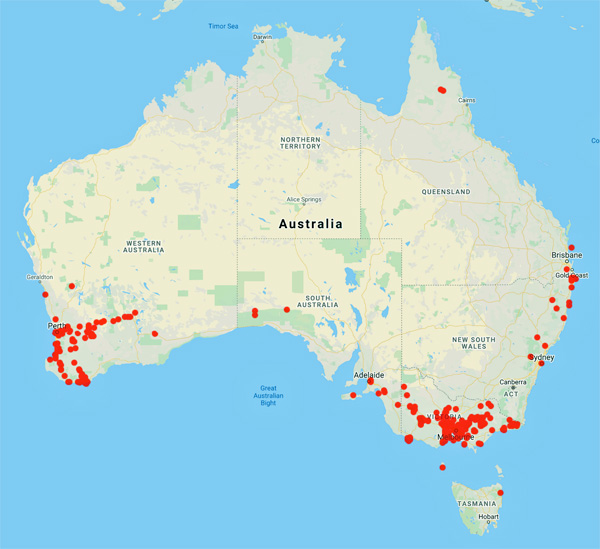 Nicholls, William Henry (1885 - 1951)
Nicholls, William Henry (1885 - 1951)
Born in Ballarat, Victoria, on 23 July 1885, died in Footscray, Victoria,
on 10 March 1951.
With only a primary education at Macarthur Street State School at Ballarat (where his father was a school teacher), Nicholls taught himself drawing and painting, and in middle-age acquired a smattering of Latin, sufficient to draw up his own diagnosis for the many new orchids he published.
J.H. Willis wrote:
"Naturally a retiring, almost shy man, he seldom spoke at meetings and shrank from delivering an address; yet his wide experiences on mountains and dale, over half a century, had stored up a rich fund of anecdotes – it is a thousand pities they never saw print."
During the Great Depression he faced years of severe financial hardship and had to give up his book-binding business. At length he found employment in the Footscray Municipal gardens, as propagator and landscape artist.
He was an accomplished photographer, with many flower portraits published in Wild Life magazine.
An amateur botanist, he was one of only a few to study orchids in Australia before World War II.
Nicholls named 99 orchid taxa (57 species, 4 hybrid species, 37 varieties, 1 form) and one Nicotiana hybrid (including co-authorships).
He published over 150 articles in Victorian and Queensland naturalist and orchid journals.
Two orchids were named by other botanists to honour Nicholls:
Diplodium nichollsianum D.L.Jones
Prasophyllum nichollsianum Rupp
His collection of
over 2,000 specimens is now in MEL.
He was an accomplished watercolourist.
His paintings were published posthumously
as Orchids of Australia (1951-1958, 1969).
Example of artwork:
Epiblema grandiflorum
Source: Extracted from:
A.E.Orchard (1999) A History of Systematic
Botany in Australia, in Flora of Australia Vol.1, 2nd ed.,
ABRS.
J.H. Willis in: Victorian Naturalist, Vol.67 p.242, April 1951.
Taxa stats courtesy of A. Monro (2024)
Portrait Photo: Victorian Naturalist, Vol.67 p.241-243, April 1951.
Collecting localities for 'Nicholls, W.H.' from AVH (2021)
Data from 2,546 specimens



 Nicholls, William Henry (1885 - 1951)
Nicholls, William Henry (1885 - 1951)